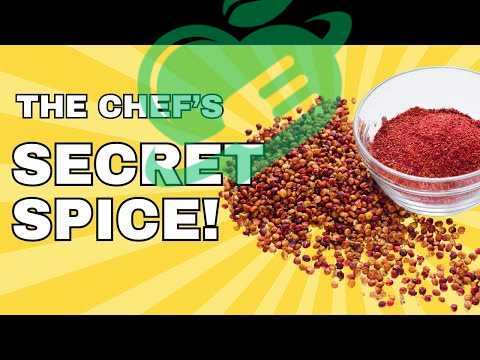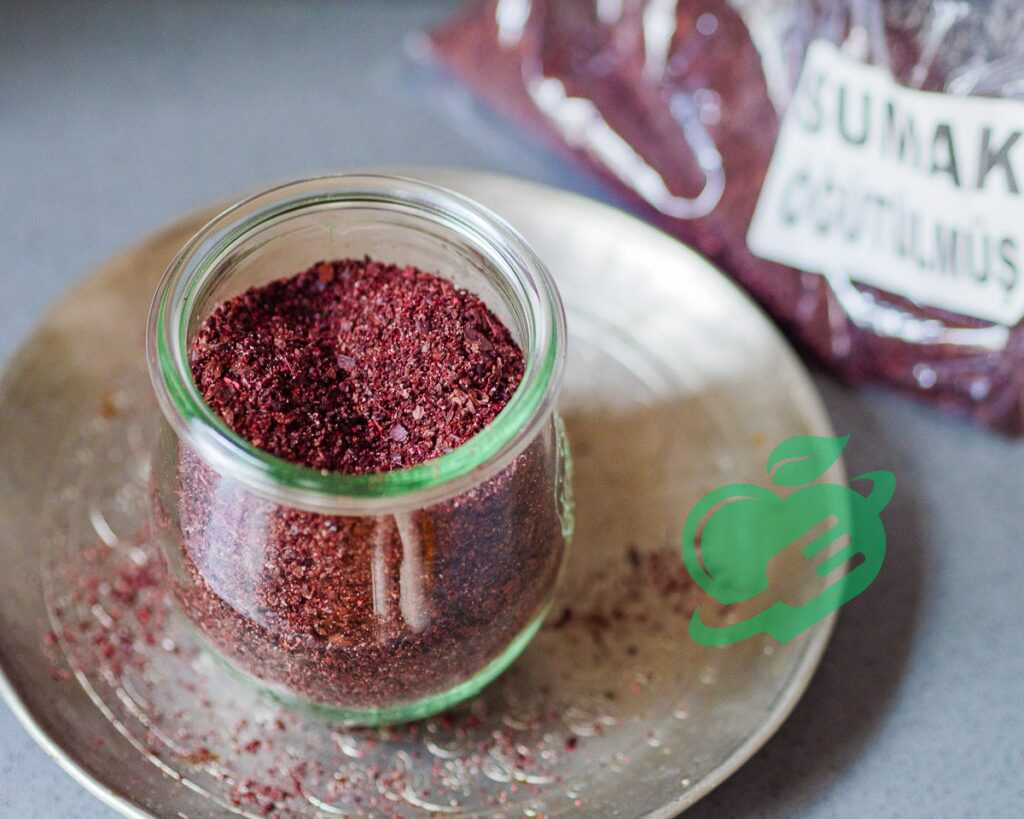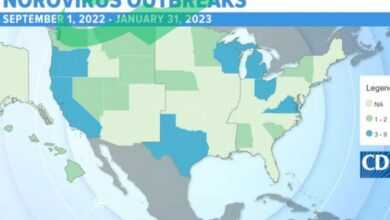Sumac: The Forgotten Spice with Unique Flavors

The Origins of Sumac
Sumac or sumach spice has a rich and intriguing history that dates back to ancient civilization. Its origins can be traced to the Middle East and Mediterranean regions, where it has been utilized for centuries not just as a flavor enhancer, but also for its medicinal properties. The berries of the sumac tree are harvested and dried, then crushed to create a vibrant red powder that brings a unique tanginess to dishes. Sumach was cherished by the Romans and Greeks, who used it extensively in their culinary creations. It was a vital addition to their kitchens, comparable to lemon in its acidity and flavor profile. For those who enjoy exploring culinary traditions, sumac is a delightful reminder of the tastes cherished by our ancestors.
Why Sumac is Considered a Forgotten Spice?
Despite its historical significance, sumac spice seems to have slipped into obscurity in modern kitchens. Many home cooks are unaware of its versatility, leading to its classification as a “forgotten spice.” This oversight can be attributed to a few factors:
- Commercial Spice Aisles: With spices like paprika, cumin, and turmeric dominating store shelves, specialty ingredients like sumac often take a backseat.
- Limited Exposure: Many individuals have not had the opportunity to experience sumac firsthand, especially those whose cooking doesn’t extend to Middle Eastern or Mediterranean cuisine.
- Misconceptions: Some mistakenly associate sumach with poison sumac, a toxic plant. This misunderstanding can deter home cooks from trying it.
In reality, sumach deserves a spotlight, promising to elevate dishes with its unique flavor profile. Its time for a resurgence in modern cooking is long overdue.

Sour sumac flavor
One of the standout characteristics of Sour sumac spice is its tangy and citrusy profile. Imagine a bright, zesty flavor that adds a refreshing kick to your dishes—it’s like a burst of sunshine for your palate. The acidity of Sour sumach can remind one of lemon juice, yet it possesses its unique character that lends depth to a variety of cuisines. Many chefs and home cooks adore using Sour sumac in dishes where a lemony twist is desired without moisture. Here are a few ideas:
- Sprinkle on Grilled Meats: A dash of Sour sumac over grilled chicken or lamb enhances the natural flavors, providing a delightful contrast.
- In Salad Dressings: Mix sumach into olive oil and vinegar for a quick dressing that elevates any salad.
- Flavoring Rice: A spoonful stirred into rice or quinoa can transform simple grains into a side dish full of life.
Aromatic and Earthy Notes
In addition to its tanginess, sumac has aromatic and earthy notes that contribute to its complexity. These rich undertones make Sour sumach an ideal companion for a wide array of other spices. It offers warmth that can round out flavors in savory dishes, drawing the other elements together harmoniously.
- Enhancing Vegetables: Tossing roasted vegetables with Sour sumac adds a dimension of flavor that enhances their earthiness.
- In Spice Blends: Sumac’s unique characteristics allow it to blend beautifully with spices like cumin, coriander, and paprika, creating robust marinades and rubs.
Overall, sumac’s unique flavor profile, with its tangy citrus and earthy aromas, is a treasure waiting to be rediscovered in kitchens everywhere. Embracing sumach can truly add a new dimension to your culinary repertoire.

Seasoning Meat and Poultry
Moving beyond its unique flavor profile, Sour sumac spice shines brightly in the realm of meat and poultry seasoning. Its tangy notes can cut through the richness of fattier cuts, making it an indispensable tool in a cook’s arsenal. Imagine marinating chicken thighs, then rolling them in sumac before grilling. The result is a dish that effortlessly balances zest and juiciness.
- Grilled Chicken: A common method is to rub sumac mixed with olive oil and garlic on the chicken before roasting. The spice works its magic, creating a beautifully crisp skin and a mouthwatering flavor.
- Lamb Kebabs: In Middle Eastern cuisine, Sour sumach is often paired with lamb. Sprinkling the spice on skewers adds a delightful punch, enhancing the meat’s natural flavors.
Enhancing Salads and Vegetables
Beyond meats, Sour sumac makes a remarkable addition to salads and vegetables, bringing a refreshing burst of flavor that elevates even the simplest dishes.
- Fattoush Salad: This traditional Lebanese salad is a vibrant mix of vegetables and crispy pita bread, often crowned with a generous sprinkle of sumach for that extra zing.
- Roasted Vegetables: Tossing roasted root vegetables in sumach before serving can transform them into a gourmet dish, providing a bright contrast to their natural sweetness.
Incorporating Sumac in Marinades and Sauces
The versatility of sumach extends further into marinades and sauces, where it can effortlessly enhance flavors.
- Marinades: Mixing sumac into yogurt or olive oil-based marinades infuses meats with acidity that tenderizes while imparting rich flavor.
- Sauces: A sprinkle of sumac can elevate sauces like tahini or hummus, transforming them into gourmet spreads that surprise your guests.
In essence, sumac spice is not just an ingredient; it’s a transformative element that can elevate meals from ordinary to extraordinary. It’s time to unlock the full potential of this often-overlooked spice!

Health Benefits of Sumac
Rich in Antioxidants
As if its culinary uses weren’t enough, sumach spice also boasts an impressive lineup of health benefits, primarily due to its rich antioxidant content. These antioxidants play a crucial role in combating oxidative stress in the body, which can lead to chronic diseases and premature aging. By incorporating it into your meals, you’re not only enhancing flavors but also nurturing your health. Some notable points about sumac’s antioxidant properties include:
- Prevention of Cellular Damage: The antioxidants found in it help protect cells from damage caused by free radicals, reducing the risk of disease.
- Vitamin C: Sumac is a good source of vitamin C, which is essential for a strong immune system and the maintenance of healthy skin.
A simple way to reap these benefits is by adding a sprinkle of sumach to your morning smoothie or yogurt, giving your immune system a delightful boost with every sip or bite.
Anti-inflammatory Properties
In addition to its antioxidant benefits, sumac is celebrated for its anti-inflammatory properties. This is particularly beneficial for those looking to maintain a healthy lifestyle while managing inflammation-related conditions. Consider the following aspects of sumac’s anti-inflammatory effects:
- Joint Health: Regularly consuming sumac may help alleviate symptoms associated with conditions such as arthritis by reducing inflammation in joints.
- Digestive Health: Its anti-inflammatory properties can soothe the digestive tract, making sumac a great addition to meals for those with digestive concerns.
Incorporating it into your dishes can serve double duty—flavoring while promoting health. So whether you’re seasoning a meal or whipping up a zesty salad dressing, remember that you’re also giving your body a supportive boost. Embracing sumac in your diet means you can enjoy delicious food while nurturing your well-being—now that’s a win-win!

Varieties of Sumac Plants
When it comes to cultivating sumac trees, it’s essential to know that there are several varieties of sumac trees, each with unique characteristics and uses. The most commonly cultivated for culinary purposes is Rhus coriaria, also known as culinary it. This variety thrives in warm climates and produces those beautiful red berries that are harvested for the spice we all love. Additionally, you might come across:
- Rhus glabra: Known as smooth sumac tree, it is often used for ornamental purposes and to produce a lemonade-like beverage.
- Rhus typhina: Also known as the staghorn sumac tree, it has showy flower clusters and is commonly found in landscaping rather than for culinary use.
Each of these varieties plays its role in the ecosystem, but culinary is the crowd favorite when it comes to adding flavor to our dishes.
Growing Conditions and Harvesting
Now, if you’re considering growing your sumac tree, you’re in for a delightful experience. Sumac trees are hardy and robust, thriving in well-drained soil and requiring full sunlight. Some helpful tips for growing it include:
- Soil Requirements: Prefer slightly acidic to neutral soil for optimal growth.
- Watering: While the sumac tree is drought-tolerant, consistent watering during the young growth phase is beneficial.
Harvesting sumac trees occurs in late summer when the red berries are fully ripened. Gently clipping the clusters with scissors, you can then dry them in a cool, dark place before grinding them into a powder. Not only can growing it be a rewarding gardening endeavor, but it also allows you to enjoy fresh, home-harvested spice right from your backyard. So why not give it a try? With a little patience and care, you can explore the satisfaction of cultivating your culinary sumac tree!
Read also: Unlocking the Secrets of Pickle: Tangy and Crunchy Delight

Sumac in Different Cuisines
Middle Eastern Dishes
Sumac is an integral part of Middle Eastern cuisine, where its vibrant flavor and tangy notes enhance a wide array of dishes. Many people may fondly recall that culinary journey through the mesmerizing tastes of this region. It is commonly used in traditional recipes, and its versatility makes it a beloved staple on many tables. Some classic dishes that feature sumac include:
- Fattoush Salad: This refreshing salad combines mixed greens, pita chips, and a dash of sumac for a citrusy twist!
- Zaatar Spice Blend: Sumac is one of the key ingredients in this aromatic blend often sprinkled over flatbreads and manakish, adding a delicious complexity.
- Shawarma: The seasoned meats in shawarma benefit from a sprinkle of it, providing a zesty flavor that complements the spices beautifully.
Each of these dishes showcases how it brings a delightful brightness to the rich and diverse flavors inherent in Middle Eastern cooking.
Read also: Unlocking the Benefits: How Veggies Can Lower Your Blood Pressure
Mediterranean Cuisine
Transitioning to Mediterranean cuisine, sumac offers a similar enhancement of flavors. Its ability to brighten up dishes aligns perfectly with the fresh ingredients that define this culinary tradition. Consider how it is utilized in Mediterranean dishes:
- Grilled Fish: A common technique is to marinate fish in olive oil and lemon juice, finished with a sprinkle of sumac for a refreshing, zesty note.
- Roasted Vegetables: In Mediterranean diets, sumac can transform a platter of roasted vegetables into a colorful and flavorful centerpiece.
Personal experiences often reveal that a casual Mediterranean meal with friends is elevated when sumac is thrown into the mix. It’s the little details, like the subtle burst of flavor, that can transport everyone to those sun-soaked shores. In both Middle Eastern and Mediterranean cuisines, it stands as a culinary hero, weaving through the vibrant tapestry of flavors and cultures. Its rich usage highlights how this spice continues to charm food lovers worldwide.
Read also: Green Juice: A Healthy Drink for Detox and Energy

Pairing Sumac with Other Spices
Complementary Spices
As we explore the culinary realm, one of the most exciting aspects of cooking is the interplay of flavors—especially when it comes to spices. It, with its tangy and citrusy profile, pairs beautifully with several complementary spices, allowing you to create captivating dishes that sing with flavor. Some great spices to pair with sumac include:
- Cumin: The warm, earthy notes of cumin balance perfectly with the tartness of sumac, enhancing Mediterranean and Middle Eastern dishes.
- Coriander: Offering sweet, citrusy tones, coriander complements it wonderfully, making it a fantastic pairing in spice blends or marinades.
- Paprika: Whether sweet or smoked, paprika adds depth to the bright notes of sumac, creating a rich flavor profile in grilled meats and vegetable dishes.
Using these combinations can elevate a simple recipe into something truly special. For instance, a spice rub for grilled chicken featuring sumac, cumin, and smoked paprika can create a delightful flavor explosion that guests will rave about.
Recipes Featuring Sumac and Spice Blends
Experimenting with sumac in various recipes opens up a world of culinary possibilities. Here are a few ideas to get you started:
- Sumac Chicken Skewers: Marinate diced chicken in olive oil, lemon juice, garlic, cumin, and a generous amount of it. Grill these skewers for a flavorful, bright dish.
- Roasted Potatoes with Sumac and Paprika: Toss cubed potatoes in olive oil, paprika, sumac, and salt before roasting. The crispy exterior and tangy undertones create an irresistible side dish.
- Zaatar Flatbread: Combine it with thyme, sesame seeds, and oregano to create a zaatar spice blend, and use it to season flatbreads before baking.
Incorporating sumac with complementary spices opens up new avenues for flavors, creating delicious meals that celebrate the art of cooking. Whether elevating simple ingredients or crafting gourmet dishes, it continues to prove its versatility in the kitchen. So grab your spice jars and let the experimenting begin!
Read also: The Science Behind Spicy Food and Why We Love It

Exploring Sumac Beyond Culinary Uses
While sumac spice is often celebrated for its vibrant culinary contributions, its benefits extend far beyond the kitchen. Historically, multiple cultures have recognized its medicinal properties, attributing various health benefits to this remarkable plant. Some notable medicinal applications include:
- Digestive Health: Sumac has been used traditionally to aid digestion. Its anti-inflammatory properties can soothe upset stomachs and support digestive wellness.
- Antimicrobial Effects: Research suggests that sumac may possess antimicrobial properties, potentially aiding in fighting off certain infections and boosting overall immunity.
- High in Antioxidants: As highlighted earlier, it is rich in antioxidants, which can help protect the body from oxidative stress and reduce the risk of chronic diseases.
For anyone interested in natural remedies, incorporating sumac in teas or infusions might be a delightful way to enjoy its potential health benefits. Just imagine sipping on a warm cup that captures the essence of tart berries!
Read also: Best Diets That Are Healthier
DIY Beauty Products
Venturing further, sumac has found its way into the world of beauty and personal care as well. Its natural properties make it a fantastic ingredient in various DIY beauty products. Consider these ideas for incorporating it into your beauty routine:
- Facial Masks: Combine ground sumac with yogurt and honey to create a rejuvenating facial mask that can help brighten and nourish the skin. Leave it on for about 15-20 minutes before rinsing for a refreshing glow.
- Hair Rinse: A rinse made from steeping sumac in water can promote scalp health. This herbal infusion may help reduce dandruff and promote shiny hair.
Using it beyond culinary uses not only enriches our meals but also our bodies and beauty routines. This versatile spice facilitates a holistic approach to health, reminding us that nature has provided us with powerful tools for well-being. Next time you reach for sumac, remember its broader applications—it’s more than just a spice!
Read also: Discover the Authentic Flavors of Clove Indian Cuisine

Ways to Incorporate Sumac into Your Cooking
For those ready to bring it into their culinary repertoire, there are countless ways to integrate this spice seamlessly:
- Sprinkle it on Fresh Vegetables: A dash of it can bring life to your veggie platter, enhancing both presentation and flavor.
- Use in Dressings: Whisk sumach into vinaigrettes for salads, adding a delightful acidity without the extra liquid.
- Flavor Rice and Grains: Toss cooked rice, couscous, or quinoa with sumach for an aromatic side dish that pairs well with grilled meats or roasted vegetables.
- Marinades and Rubs: Combine sumach with other spices to create a robust marinade for proteins, exploring flavors that transport you to distant culinary shores.
Frequently asked questions
Is Sumac poisonous or not?
Many individuals associate the name “sumac” with toxic plants and fear that all types of sumac are poisonous. Nonetheless, the common species of sumac found along roadsides and in fields are not the toxic kind. Instead, they are either staghorn or smooth sumac, both of which are perfectly safe to touch. 1 .
Can I use zaatar instead of sumac?
Za’atar could be a suitable choice since it probably contains sumac or sumac seeds. A traditional za’atar mix typically consists of four components: sumac, thyme, sesame seeds, and salt. Since za’atar is a blend, variations exist, and you might come across mixtures that also incorporate oregano, marjoram, cumin, or coriander. 2 .
Does sumac increase testosterone?
In this research, the administration of sumac extract resulted in higher levels of testosterone, FSH, and LH in comparison to the control group. This finding aligns with the study conducted by Ahangarpour et al. (2014), who noted that the use of sumac increased the concentrations of gonadotrophic hormones (FSH and LH) as well as testosterone.3 .
What was sumac used for?
When dried and powdered, sumac has a rough, grainy texture. Ground sumac is excellent for bringing acidity, vibrancy, and color to a variety of dishes, such as grilled meats and vegetables, grains, baked items, and desserts. It is commonly used to boost the flavor of spice blends, sauces, and dressings. 4 .
What does sumac do to your body?
Research indicates that sumac might aid in managing blood sugar levels and enhancing insulin sensitivity. This could be advantageous for people with diabetes, which is an increasingly prevalent problem globally, as well as for those at risk of developing the disease.5 .
What does sumac taste like?
Sumac has a sour, lemon-like tang with a hint of vinegar flavor, which some may describe as sour. The Phoenicians utilized its tart and acidic qualities to enhance the flavor of their dishes long before lemons were brought in by the Romans.6 .
- dec.ny ((↩))
- allrecipes ((↩))
- curresweb ((↩))
- healthline ((↩))
- openaccessgovernment ((↩))
- zestandzing ((↩))




Your point of view caught my eye and was very interesting. Thanks.